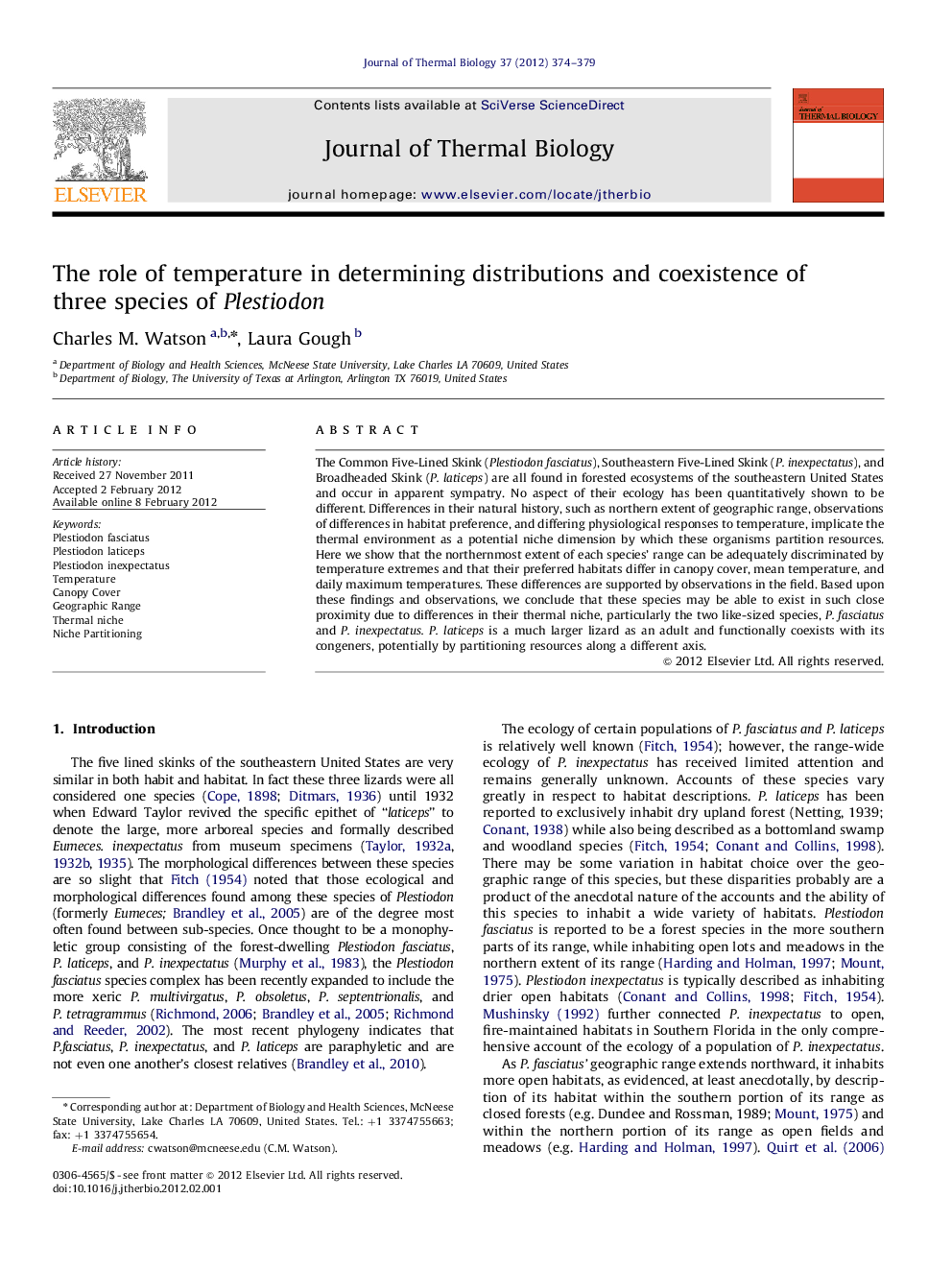| Article ID | Journal | Published Year | Pages | File Type |
|---|---|---|---|---|
| 2843222 | Journal of Thermal Biology | 2012 | 6 Pages |
The Common Five-Lined Skink (Plestiodon fasciatus), Southeastern Five-Lined Skink (P. inexpectatus), and Broadheaded Skink (P. laticeps) are all found in forested ecosystems of the southeastern United States and occur in apparent sympatry. No aspect of their ecology has been quantitatively shown to be different. Differences in their natural history, such as northern extent of geographic range, observations of differences in habitat preference, and differing physiological responses to temperature, implicate the thermal environment as a potential niche dimension by which these organisms partition resources. Here we show that the northernmost extent of each species' range can be adequately discriminated by temperature extremes and that their preferred habitats differ in canopy cover, mean temperature, and daily maximum temperatures. These differences are supported by observations in the field. Based upon these findings and observations, we conclude that these species may be able to exist in such close proximity due to differences in their thermal niche, particularly the two like-sized species, P. fasciatus and P. inexpectatus. P. laticeps is a much larger lizard as an adult and functionally coexists with its congeners, potentially by partitioning resources along a different axis.
► Three species of skinks in the Eastern United States are thought to be sympatric. ► We quantify thermally significant variables in their local environment and their geographic range. ► Two of the species are different in terms of canopy cover and daily temperatures of preferred micro-habitat. ► All three species' geographic ranges can be accurately predicted using temperature variables. ► Thermal aspects of their niche are the first variables shown to differ among these species.
